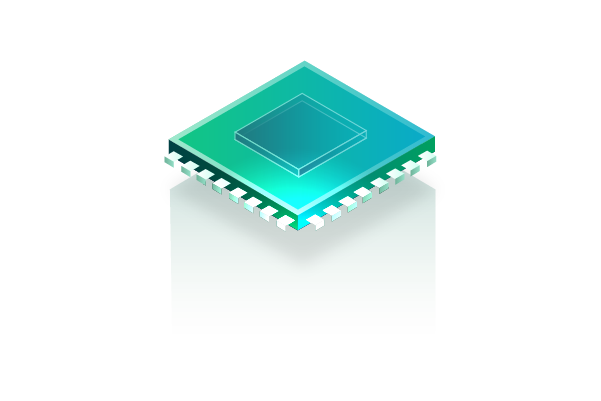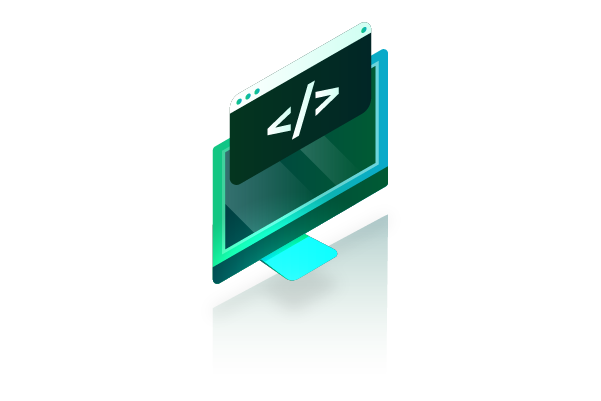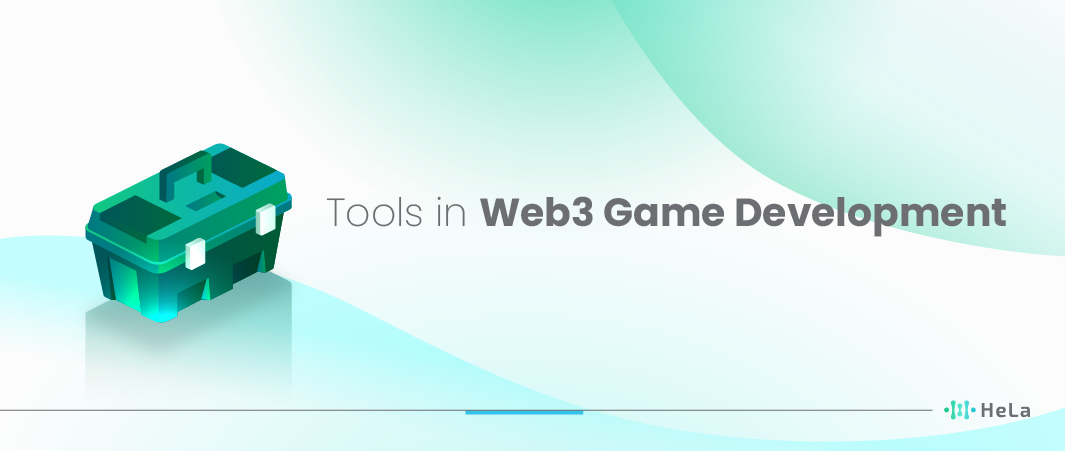The gaming industry is on the brink of a revolution, thanks to the advent of Web3 technologies. As we move into 2024, the sector is buzzing with excitement over the potential that decentralized systems, blockchain, and NFTs bring to the table. This article delves deep into the tools and technologies shaping the future of Web3 game development, presenting a comprehensive guide for enthusiasts and developers alike.
At the heart of this transformation is the shift from traditional gaming paradigms to a more open, transparent, and user-driven environment. Web3 game development isn’t just about entertainment; it’s about creating immersive experiences where players have true ownership of assets and a voice in the game’s evolution. As we explore these new horizons, understanding the technological underpinnings becomes crucial.
In this journey, we will navigate through various aspects of Web3 game development. From blockchain technology and smart contracts to decentralized autonomous organizations (DAOs) and tokenomics, each component plays a pivotal role. Let’s embark on this exciting exploration of how gaming is being redefined through the power of Web3.
What is Web3 Gaming?
Web3 gaming introduces a revolutionary approach to the video game industry, utilizing blockchain technology to decentralize the gaming experience. This shift allows players to have genuine ownership of their in-game assets, such as skins, characters, and virtual land. These assets are typically represented as Non-Fungible Tokens (NFTs), making them unique and tradable on various platforms. The core appeal of Web3 gaming lies in its promise to empower players, giving them control over their virtual belongings and potentially earning real-world value through their in-game achievements and trades.
Also Read: Zero-Knowledge Proofs in Blockchain: A Developer’s Guide
One of the significant benefits of Web3 gaming is the potential for a more equitable ecosystem. Players can earn rewards that have real-world value, participate in the game’s governance, or contribute to the game’s development in meaningful ways. It also opens up possibilities for new game mechanics and revenue models, such as play-to-earn, where players can earn cryptocurrency rewards.
However, Web3 gaming also faces challenges, including technical complexities, scalability issues, and a steep learning curve for new users unfamiliar with cryptocurrencies and blockchain technology. There’s also an ongoing debate about the environmental impact of blockchain technology and how it can be mitigated.
The impact of Web3 on the player experience is profound. It redefines what it means to play and own in the digital world, providing a more immersive, interactive, and rewarding gaming experience. However, as the technology is still in its early stages, it’s an evolving landscape with many hurdles to overcome. As Web3 gaming continues to grow, it will likely shape the future of digital entertainment and online economies.
Essential Tools for Web3 Game Developers
To build immersive and engaging Web3 games, developers need a robust set of tools and platforms. Here’s an extended look into some of the essential tools in each category:
Blockchain Platforms
- Ethereum: As the first to implement smart contracts, Ethereum remains a foundational platform for many developers. Its large community, comprehensive documentation, and wide array of decentralized applications (DApps) make it a go-to for game development. However, its popularity comes with high gas fees and network congestion issues.
- Binance Smart Chain (BSC): BSC is a favorite for developers looking for faster transaction times and lower fees while maintaining compatibility with Ethereum’s tools and DApps. Its unique consensus mechanisms and supportive infrastructure make it an attractive platform for high-throughput gaming applications.
- Polygon (Matic): Polygon provides a scalable and efficient framework for building interconnected blockchain networks. It’s known for its ability to provide high-speed, low-cost transactions without compromising on security, making it ideal for games that require a high volume of transactions and interactions.
Smart Contract Development
- Solidity: The most widely used language for Ethereum smart contract development, Solidity is essential for creating complex contracts that underpin the logic of most decentralized games. Developers value its expressiveness and the security it offers through constant updates and improvements.
- Truffle Suite: This suite is a comprehensive ecosystem for Ethereum developers, including a development environment, testing framework, and asset pipeline. It’s popular for its built-in smart contract compilation, linking, deployment, and binary management.
- Hardhat: Known for its advanced Ethereum development environment, Hardhat includes features like console.log debugging, stack traces, and explicit error messages. It’s preferred for its local Ethereum network emulation, which simplifies the development and testing process.
Software Development Kits (SDKs) and APIs
- Web3.js / Ethers.js: These JavaScript libraries are essential for interacting with Ethereum nodes. They allow developers to send ETH, interact with smart contracts, create decentralized applications, and more. The libraries differ in syntax and features, giving developers flexibility in how they build and interact with the blockchain.
- Moralis/Web3Auth: These tools provide powerful authentication solutions that simplify user onboarding and interaction with blockchain technology. They handle the heavy lifting of user session management and wallet integration, allowing developers to focus on building immersive game experiences.
- Chainlink: As a decentralized oracle network, Chainlink allows smart contracts to securely interact with external data sources, APIs, and payment systems. This connectivity is crucial for games that need real-world data or wish to integrate traditional payment methods.
Testing and Deployment
- Ganache: A part of the Truffle Suite, Ganache is a personal Ethereum blockchain used for contract deployment, dApp development, and various other tasks. Its ability to fork from the main Ethereum network allows developers to test their games in a controlled environment before going live.
- Alchemy/Infura: These are node infrastructure platforms providing developers with the necessary tools to build, deploy, and scale their dApps effectively. They handle the complexities of node operation and provide enhanced APIs, analytics, and monitoring tools.
Non-Fungible Tokens (NFTs) and Marketplaces
- OpenSea SDK: OpenSea is one of the largest NFT marketplaces, and its SDK allows developers to seamlessly integrate NFT transactions within their games. This means players can trade, buy, or sell in-game assets directly through the game interface.
- Rarible Protocol: It’s a decentralized NFT toolkit that allows anyone to create or trade digital collectibles without needing extensive blockchain knowledge. The Rarible protocol is community-governed, ensuring that it evolves with the needs and wants of its user base.
These tools provide a strong foundation for any developer looking to enter the Web3 gaming space. They offer the functionalities needed to create, deploy, and manage complex gaming ecosystems on the blockchain. Keeping abreast of the latest developments in these tools and the broader blockchain technology landscape is crucial for success in this rapidly evolving field.
Technologies Powering Web3 Games

Web3 games leverage a variety of technologies to create immersive, decentralized gaming experiences. Here are the key technologies involved:
Blockchain
At its core, blockchain technology offers a secure, immutable ledger, ideal for recording transactions in a tamper-proof manner. In Web3 games, the blockchain acts as the infrastructure for creating, owning, and trading digital assets securely without the need for centralized control. It ensures that each item, character, or piece of land has a unique, verifiable history, fostering trust and rarity. Furthermore, blockchain enables global accessibility, allowing a seamless gaming experience across borders.
Smart Contracts
Smart contracts are programs that run on the blockchain and automatically execute actions when predetermined conditions are met. In gaming, this means automated, secure, and transparent handling of complex operations like distributing rewards, executing trades, or managing in-game decisions. They eliminate the need for intermediaries, reduce fraud, and provide a trustless environment where players can be confident that the game will act exactly as programmed.
Non-Fungible Tokens (NFTs)
NFTs are revolutionizing gaming by enabling true digital ownership and scarcity. Each NFT is a unique, indivisible token that represents ownership of a specific item or asset. In games, NFTs can represent characters, skins, weapons, or even parcels of virtual land, each with its own distinct characteristics and value. This uniqueness and proof of ownership encourage a vibrant secondary market and a sense of investment in the gaming world.
Decentralized Autonomous Organizations (DAOs)
DAOs are an organizational structure enabled by blockchain, where decisions are made from the bottom up, governed by a community of members rather than a centralized authority. In gaming, DAOs can represent a radical shift, giving players a direct voice in the development and governance of the game. This can include decisions on feature development, asset parameters, or even revenue distribution, fostering a more engaged and invested community.
InterPlanetary File System (IPFS)
IPFS is a protocol and network designed to create a peer-to-peer method of storing and sharing hypermedia in a distributed file system. For Web3 games, this means that game assets do not rely on a central server but are distributed across numerous nodes, ensuring faster load times, improved resilience, and reduced risk of data loss or censorship.
Cryptocurrencies
Cryptocurrencies are digital or virtual currencies secured by cryptography, making them nearly impossible to counterfeit. In the context of Web3 games, they are used as the medium for transactions, purchases, and trades. Players can earn cryptocurrencies as rewards, spend them on in-game items, or trade them on various exchanges. This not only enables a vibrant in-game economy but also allows players to potentially earn real-world value through their gaming achievements.
Decentralized Finance (DeFi)
DeFi extends the concept of cryptocurrencies into more complex financial use cases. In gaming, DeFi can introduce financial activities like staking, where players lock up tokens for rewards, or liquidity mining, where players provide capital to in-game markets. This integration can create more complex, engaging economies and opportunities for players to benefit financially from strategic gameplay.
Virtual Reality (VR)/Augmented Reality (AR)
VR and AR technologies are about creating immersive experiences. In Web3 games, when combined with the above technologies, they can create a sense of presence and immersion that’s unmatched in traditional gaming. Players might walk through virtual worlds they own a part of, interact with NFT-based characters, or experience game events as if they were actually there. This level of immersion, combined with the economic and governance features of Web3, heralds a new era of interactive and immersive gaming.
These technologies are interwoven to create a new generation of games that offer unprecedented levels of immersion, ownership, and player agency. The continuous development and intersection of these technologies promise to keep pushing the boundaries of what’s possible in gaming and digital interaction.
The Role of DAOs and Tokenomics in Gaming

Decentralized Autonomous Organizations (DAOs) and tokenomics are significantly influencing the gaming industry by introducing new governance structures and economic models. DAOs are essentially organizational entities governed by smart contracts, enabling collective ownership and decision-making in gaming communities. They democratize game development and management, allowing players and stakeholders to have a say in game rules, updates, and revenue distribution.
Tokenomics, the study of the supply and demand characteristics of cryptocurrencies, plays a crucial role in these ecosystems. It involves creating in-game tokens that serve various purposes such as rewarding players, purchasing items, or voting on game developments. These tokens can incentivize player engagement and loyalty by offering real economic value and stakes in the game’s future.
Implementing DAOs and tokenomics in Web3 games leads to more engaging and sustainable gaming ecosystems. Players become more than just consumers; they are active participants with a financial and decision-making stake in the game. This can lead to more innovative and community-driven game development and a more loyal player base.
The implications of DAOs and tokenomics in gaming are vast. They could lead to entirely new genres of games based on collective ownership, real-world economic principles, and decentralized governance. This not only changes how games are created and played but also how they are valued and monetized. As these technologies mature, we may see a fundamental shift in the gaming industry toward more open, democratic, and player-centric models.
Overcoming Challenges and Looking Ahead

In the realm of Web3 game development, the journey ahead is both promising and fraught with challenges. Scalability remains a significant hurdle, as developers strive to create games that can handle a large number of transactions and users without sacrificing performance. User experience is another crucial aspect, with a need for more intuitive interfaces and smoother interactions to attract and retain a broader audience. Additionally, the evolving landscape of regulations presents a maze of compliance issues that developers must navigate carefully.
Also Read: 7 Best Blockchains for NFT to Consider in 2024
Despite these obstacles, the industry is making strides towards resolving them. Innovations in blockchain technology are gradually addressing scalability concerns, with solutions like layer-2 protocols and sharding. In terms of user experience, there’s a growing focus on integrating familiar gaming elements and simplifying wallet interactions, making Web3 games more accessible to the average user. Regulatory challenges are being met with proactive dialogue and collaboration between developers and policymakers, fostering a legal environment conducive to innovation.
As these challenges are being addressed, the stage is set for a more robust and user-friendly Web3 gaming environment. The future holds the promise of more immersive, decentralized, and player-empowered gaming experiences, signaling an exciting new chapter in the world of gaming.
Conclusion
As we look towards the future, it’s clear that Web3 game development is set to redefine the gaming landscape. With its emphasis on decentralization, player empowerment, and innovation, it offers a new realm of possibilities for developers and gamers alike. As tools and technologies continue to evolve, we can expect to see more immersive, engaging, and groundbreaking games emerging from the Web3 space.
The journey into Web3 gaming is just beginning, and the potential is limitless. As developers continue to experiment and innovate, and as the community grows, the world of gaming is poised to undergo its most significant transformation yet. So, whether you’re a developer, a gamer, or simply a curious observer, the era of Web3 gaming beckons with opportunities and experiences like never before.
In conclusion, Web3 game development is not just a fleeting trend but a substantial shift towards a more inclusive, transparent, and innovative gaming ecosystem. As we embrace these changes, the promise of a new and exciting gaming frontier is just on the horizon, waiting to be explored. Get ready to be part of this thrilling journey into the future of gaming with Web3!
Disclaimer: The information provided by HeLa Labs in this article is intended for general informational purposes and does not reflect the company’s opinion. It is not intended as investment advice or recommendations. Readers are strongly advised to conduct their own thorough research and consult with a qualified financial advisor before making any financial decisions.

Joshua Soriano
I am a writer specializing in decentralized systems, digital assets, and Web3 innovation. I develop research-driven explainers, case studies, and thought leadership that connect blockchain infrastructure, smart contract design, and tokenization models to real-world outcomes.
My work focuses on translating complex technical concepts into clear, actionable narratives for builders, businesses, and investors, highlighting transparency, security, and operational efficiency. Each piece blends primary-source research, protocol documentation, and practitioner insights to surface what matters for adoption and risk reduction, helping teams make informed decisions with precise, accessible content.
- Joshua Soriano#molongui-disabled-link
- Joshua Soriano#molongui-disabled-link
- Joshua Soriano#molongui-disabled-link
- Joshua Soriano#molongui-disabled-link

